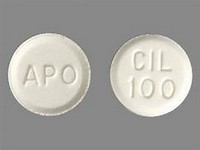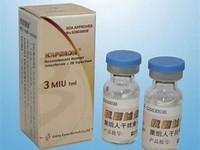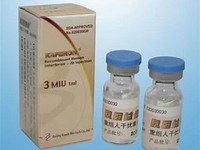Cilostazol

Cilostazol
CLINICAL USE
Intermittent claudicationDOSE IN NORMAL RENAL FUNCTION
100 mg twice daily, 30 minutes before or 2 hours after foodPHARMACOKINETICS
DOSE IN RENAL IMPAIRMENT
GFR (mL/MIN)
25–50 Dose as in normal renal function10–25 Dose as in normal renal function. See ‘Other Information’DOSE IN PATIENTS UNDERGOING RENAL REPLACEMENT THERAPIES
IMPORTANT DRUG INTERACTIONS
Potentially hazardous interactions with other drugsAnagrelide: avoid concomitant use Antibacterials: concentration increased by erythromycin; also concentration of erythromycin reduced – avoid concomitant use. Antifungals: concentration possibly increased by ketoconazole – avoid concomitant use. Antivirals: concentration possibly increased by amprenavir, indinavir, lopinavir, nelfinavir, ritonavir and saquinavir – avoid concomitant useCalcium-channel blockers: concentration increased by diltiazem – avoid concomitant useUlcer-healing drugs: concentration possibly increased by cimetidine and lansoprazole – avoid concomitant use; concentration increased by omeprazole – avoid concomitant useADMINISTRATION
Reconstition
–Route
OralRate of Administration
–Comments
–OTHER INFORMATION
There are two major metabolites, a dehydro-cilostazol and a 4’-trans-hydroxy cilostazol, both of which have similar apparent half-lives. The dehydro metabolite is 4–7 times as active a platelet anti-aggregant as the parent compound, and the 4’-trans-hydroxy metabolite is one fifth as activeIn subjects with severe renal impairment, the free fraction of cilostazol was 27% higher and both Cmax and AUC were 29% and 39% lower respectively than in subjects with normal renal function. The Cmax and AUC of the dehydro metabolite were 41% and 47% lower respectively in the severely renally impaired subjects compared to subjects with normal renal function. The Cmax and AUC of 4’-trans-hydroxy cilostazol were 173% and 209% greater in subjects with severe renal impairment. The drug should be used with great caution if administered to patients with a creatinine clearance <25 mL/minContraindicated in patients with heart failureCilostazol is under investigation for its antiplatelet effect after coronary stent implantationDose can also be reduced to 50 mg twice daily if used with drugs which affect its clearance.
See how to identify renal failure stages according to GFR calculation
See how to diagnose irreversible renal disease
Home


.JPG)





